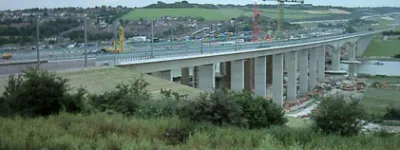We all know our way around a roundabout and everyone is familiar with a crossroads. But do you know the difference between the many types of multi-level interchange used on motorways and expressways, or why one might be chosen over another?
This page explores the different types of interchange you'll find all over the UK on limited access roads - roads with flyover junctions that separate fast moving traffic from the local road network.
Visitors to this page might also find the Dictionary helpful.
Motorway to road interchanges
Conventional, basic motorway-to-road connection.
Halfway between a diamond and a roundabout interchange.
A junction with no bridges and not much choice if you're on the side road.
The true British interchange.
Three-way interchanges
One way on and one way off: a fork in the road.
Three levels of road, three roads connected, three ways to build it.
The simplest free-flowing three-way connector.
Four-way interchanges
Four symmetrical loops — it's impossible to miss a cloverleaf. If you can find one, that is.
It is big, and it is clever.
A clever improvement on the cloverleaf.
A cheap and cheerful way to fully grade separate two intersecting roads.
Free-flowing, resizeable and also quite pretty.
With thanks to Lazlo Horvath for information on this page.













